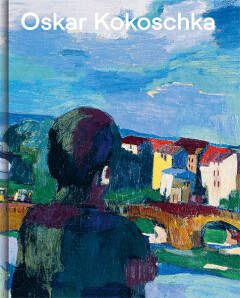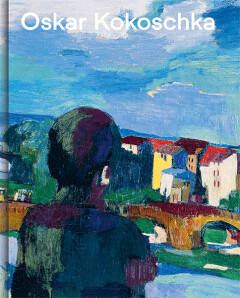
Je cadeautjes zeker op tijd in huis hebben voor de feestdagen? Kom langs in onze winkels en vind het perfecte geschenk!
- Afhalen na 1 uur in een winkel met voorraad
- Gratis thuislevering in België vanaf € 30
- Ruim aanbod met 7 miljoen producten
Je cadeautjes zeker op tijd in huis hebben voor de feestdagen? Kom langs in onze winkels en vind het perfecte geschenk!
- Afhalen na 1 uur in een winkel met voorraad
- Gratis thuislevering in België vanaf € 30
- Ruim aanbod met 7 miljoen producten
Zoeken
Oskar Kokoschka
expressionist, migrant, European : a retrospective
Régine Bonnefoit
Hardcover | Engels
€ 48,00
+ 96 punten
Omschrijving
Oskar Kokoschka (1886-1980) is, along with Francis Picabia and Pablo Picasso, one of a generation of artists who retained their allegiance to figurative painting after the Second World War, even as abstract art was consolidating its predominance. It is also thanks to them that non-representational painting and figurative art can now be practised side by side without partisan feuding. Artists of the present day acknowledge their debt to Kokoschka in particular.
The retrospective traces the motifs and motivations of a painter who felt at home in no fewer than five countries. It brings together 100 paintings and an equal number of works on paper, photographs and letters from all phases of his career. Two impressive triptychs, each around eight metres wide and two metres high - "The Prometheus Triptych" (1950, Courtauld Gallery, London) and "Thermopylae" (1954, University of Hamburg) - are the high point of Kokoschka's mature oeuvre, and of this retrospective. The two works have only been shown together once before, at the Tate in 1962.
The retrospective traces the motifs and motivations of a painter who felt at home in no fewer than five countries. It brings together 100 paintings and an equal number of works on paper, photographs and letters from all phases of his career. Two impressive triptychs, each around eight metres wide and two metres high - "The Prometheus Triptych" (1950, Courtauld Gallery, London) and "Thermopylae" (1954, University of Hamburg) - are the high point of Kokoschka's mature oeuvre, and of this retrospective. The two works have only been shown together once before, at the Tate in 1962.
Specificaties
Betrokkenen
- Auteur(s):
- Uitgeverij:
Inhoud
- Aantal bladzijden:
- 320
- Taal:
- Engels
- Geïllustreerd:
- Ja
Eigenschappen
- Productcode (EAN):
- 9783868288995
- Verschijningsdatum:
- 23/01/2019
- Uitvoering:
- Hardcover
- Afmetingen:
- 222 mm x 274 mm
- Gewicht:
- 1560 g

Alleen bij Standaard Boekhandel
+ 96 punten op je klantenkaart van Standaard Boekhandel
Beoordelingen
We publiceren alleen reviews die voldoen aan de voorwaarden voor reviews. Bekijk onze voorwaarden voor reviews.









